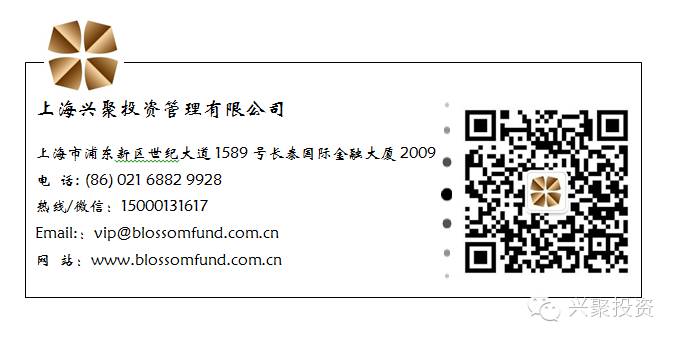【聚点】人民币贬值地震全景图,做好更坏的打算。
昨日中国提高了人民币reference 中间价1.9%后(具体原因我在昨日的文字中有简述),市场解读中国的这一行动是不得以而为之,是无法继续人为维护人民币全球第二强势货币,同时又试图拯救出口制造业的的无奈之举。因为担心中国经济硬着陆和货币战升级,全球市场普跌,美国3大股指也大跌1%以上,中国各个主要贸易国家货币和股指大跌,大宗商品大跌。只有美国国债大涨,黄金和房地产信托REIT也成了安全避风港。鉴于2014年以来人民币对比其他贸易伙伴的货币实际升值幅度还是很大,市场普遍认为还会继续贬值。根据巴克莱银行外汇分析师预测,最近一两个星期至关重要,甚至会有5%的贬值。PBOC应该还会维稳市场。
通缩压力大增,美联储加息增加不确定性,市场甚至正式公开有再次QE的言论。
下图是昨晚芝加哥商品期货交易所联邦基础利率期货合约预测的美联储9月加息的可能性45%,比前两天的60%下降:

下图是根据巴克莱银行的BEER模型,在世界主要货币中,人民币目前是第二昂贵(被高估)的货币。PHP菲律宾比索是第一被高估的货币,瑞士法郎是第三。

下图是黑石统计的在美元升值引发的各国货币战影响下,今年以来各个主要国家货币对美元的表现,可以看出中国的各个主要贸易伙伴货币普遍贬值剧烈,中国人民币和港币和美元挂钩,基本没有变化,俄国卢布涨的最好是因为去年的暴跌的反弹,瑞士法郎表现第二也是因为去年突然宣布自宫后的反弹。英镑第六强是英国经济不错,独立于欧元区是唯一处在加息通道的主要工业化国家。印度卢比表现第7也是因为吸取了前年美联储QE削减恐慌taper tantrum的教训外储充足,还有Modi 新政乐观,在最近的FED加息预期中,印度资本不仅没有流出,反而有流入。

下图是2011年7月美元从底部上来后,各国货币对美元升值的贡献度,可以看出人民币的贡献是唯一的负数。而维持人民币高估值的代价是牺牲了大量外储(因此最近几个月来抛售了大量美国国债)还不能阻止资本外流,相反最近可能有加速,因此PBOC试图以一次性较大的贬值来遏制capital flight,不过市场普遍解读1.9%的贬值远不够。不够提升出口竞争力,也不够阻止capital flight.

下图是1997年至今中国外储(除黄金之外的外储减去贸易盈余)的下降情况(单位10亿美元),可以看出2011年是一个顶点(我在两个星期前全球流动性inflection转折点一文中提及的2011-2012年EM国家货币,股指,外储的最高点,也是国际贸易国际工厂发展模式的顶点)。2014年以来持续下跌.

下图是1997年至今中国外储(除黄金之外)红线情况,和中国货物贸易盈余蓝线。

下图是昨晚市场资金避险蜂拥而入美国国债,价格大涨,10年,30年收益率大跌,200天MA穿越了50天MA.

下图是第二的资金避风港 房地产信托 REIT ETF. 昨晚上涨。

(1)中国的主要贸易伙伴货币大跌,股指也大跌。美国市场上交易的新加坡,马来西亚,台湾,印度尼西亚,澳大利亚,韩国的国家指数ETF都有3%以上的跌幅。欧洲的对中国出口大国德国DAX指数也大跌2%。
以下是昨晚中国主要贸易伙伴的国家ETF大跌的情况。除了上述的国家,因为原油大跌,也导致挪威和巴西国家ETF有2.7%和2.8%的跌幅。

下图是德国DAX大跌:

(2)因担心人民币贬值和经济硬着陆,作为最大进口国和消费国的中国进口和消费受影响,大宗商品大跌,原油大跌。
(3)严重依赖中国市场的跨国公司股价大跌,如Apple在前段已经受中国股灾影响下挫的情况下,昨晚股价又大跌5%,通用汽车,宝马,奔驰,大众股价均大跌3%-5%。本来前天因为中国股市大涨,商品期货有企稳迹象,前段被严重打压的工程机械巨头CAT股价有比较大反弹,昨晚股价再次被打击。
下图是 苹果,GM,CAT的股价。

(4)当然影响最大的还是中概股,普遍大跌,在美国市场交易的跟踪中国A股的几个ETF也有4%左右的下跌。相比而言A股"市场"在流动性和政府的支持下稳若泰山,成了最安全的市场。

下面是部分中概念股的跌幅:

(5)依赖中国市场的奢侈品公司特别是欧洲的奢侈品公司这两年来股价已经受中国市场见顶回落影响很大,昨晚更是普遍大跌5%左右。下面是Swatch, Burberry,LV的股价昨晚大跌4%以上.美国奢侈品公司Tiffany也大跌。

下图是昨晚各国货币下跌的情况:加拿大元的下跌主要是受原油价格大跌比较多。

新西兰对中国出口大量的奶类制品和羊毛,对中国出口受人民币贬值影响较大。昨晚新西兰元大跌。

澳大利亚对中国出口工业金属大宗商品,人民币的贬值对其出口构成很大负面影响,昨晚澳元大跌。

昨晚市场对人民币贬值普遍的观点是尚未到位,会持续,原因上面有所陈述,主要是2014年对其他国家货币实际升值比较多。
下图是2003年至今美元和人民币的走势情况:
 2014年以来,中国对贸易主要伙伴的国家货币如欧元,日元,韩元升值了20%,25%,12%,严重打击了本国出口,同时加剧了国内通缩压力。昨日的贬值是面临资本外流之下权衡利弊的无奈之举,其对在政府力挺和流动性狂欢下的A股影响很小,相反如上所述,国际市场却是风声鹤唳。但由于其贬值可能是持续性的,是从最高点的下降,还有一个潜在的风险因素可能会对亚洲的市场和经济造成更大的破坏。
2014年以来,中国对贸易主要伙伴的国家货币如欧元,日元,韩元升值了20%,25%,12%,严重打击了本国出口,同时加剧了国内通缩压力。昨日的贬值是面临资本外流之下权衡利弊的无奈之举,其对在政府力挺和流动性狂欢下的A股影响很小,相反如上所述,国际市场却是风声鹤唳。但由于其贬值可能是持续性的,是从最高点的下降,还有一个潜在的风险因素可能会对亚洲的市场和经济造成更大的破坏。
2014年国际清算银行曾经报告指出2000年以来全球的carry trade (低息借美元,换成人民币等他国货币,再投资于中国等其他货币国家)增加了5.5倍金额到9万亿美元,中国预计占了1/4金额。2014年以来开始随着美元升值有unwind,但是估计还有5000亿到1万亿美元还因为中国外汇的管制和人民币的坚挺继续留在中国。现在人民币的贬值趋势下,会被迫加快Unwind,因为carry trade 内的美元空头仓位受损失会导致Margin Call 而被迫抛售减仓,对市场和经济造成进一步的打击。以1997年的亚洲金融危机为例,就因为有3000-5000亿美元的carry trade,扩大了亚洲各国货币和市场的跌幅。除了Carrytrade,之外,人民币贬值下,对负债率极高的中国公司海外美元债务的偿付也是雪上加霜。下面是亚洲金融危机当年各国市场和货币的跌幅:
South Korean Won declined 34% against the USD
Thai Baht declined 40% against the USD
South Korean Gross National Product (GNP) declined 34%
The USD index rose 13% versus a basket of other major world currencies
The S&P 500 fell 15% in 1997, rallied, and then dropped another 20% in 1998
The Japanese Nikkei index declined 36%
South Korean share prices declined 58%
The 30 year US bond yield fell from 7.0% to 4.2%
Crude oil prices declined 62%
The Asian crisis contributed to the Russian default in 1998. This in turn led to the collapse of Long Term Capital which required a $3.625 billion bailout organized by the Federal Reserve as well as a 1% reduction in the Federal Funds Rate to contain the fallout.
下面是各大投行分析师对人民币贬值的观点评论。
The PBOC adjusted the CNY fixing mechanism, which prompted a step weakening in today’s fixing. From now on, FX market makers are asked to base their contribution to CNY fixing on: i) the closing FX rate in the previous day, ii) CNY supply-demand conditions, and iii) the movements of other major currencies. While public comments suggest this could be a one-off move, in our view it increases the uncertainty around the future path of the CNY, especially if closing FX rate significantly deviates from the fixing. In our view, the market’s previous expectations for a fairly stable CNY have seemingly been de-anchored by the surprising move today. Although information at this stage is limited, our current expectation is that the PBOC will likely use open market FX operations to try to reduce sharp volatilities and avoid further destabilizing the market’s CNY expectations in coming days.
- MK Tang, Goldman Sachs
The People's Bank of China shocked the market today by weakening the yuan reference rate in the largest single-day depreciation since the central bank's exchange rate reform on July 21, 2005. The PBOC statement interprets the depreciation as a one-off adjustment to fix the persistent discrepancy between the reference rate and the actual spot rate in the market. Since June, the yuan/dollar spot has been consistently about 1.5% higher than the daily fixing. The PBOC statement said that today's adjustment will fix the discrepancy, and going forward daily fixing will align more closely with the closing spot rate on the previous day. The strong appreciation of the yuan has put a lot of pressure on China's exports. It is unlikely that China will achieve the 6% trade growth target set for this year. Today's announcement is also a response to weakening currencies around the Asian region.
- Haibin Zhu, JPMorgan
The PBOC was hitting two birds with one stone: The PBOC's move will lead to a weaker yuan, lending support to export growth. It will also make the yuan exchange rate more market-determined, which could help China at the upcoming Special Drawing Rights review in November. In the past, one major problem with the yuan exchange rate setting was too much emphasis on its stability against the U.S. dollar while neglecting [trends in] other currencies. In the past 12 months, the yuan appreciated by 23% against the euro and 17% against the yen. As a result, so far this year, China's exports to the EU and Japan are down 4% and 11% year on year. Today's change should mitigate the problem. --Larry Hu, Macquarie Securities
We believe the unexpected devaluation today is more about the Special Drawing Rights bid rather than an intention to support exports. Tomorrow's fixing will be the key to test whether this devaluation of fixing is one-off event or a start of new fixing system. Our best guess is that it may be a one-off adjustment. Should it prove to be a one-off event, we think a combination of a widening of the yuan's daily trading band and a cut in the bank reserve requirement ratio is likely to be the next policy option to increase the yuan's flexibility. In the near term,
we may see more volatility ahead.
- Tommy Xie Dongming, OCBC
We think it unlikely that the Chinese government will let only market momentum drive the yuan exchange rate from now on, as that can be quite destabilizing. We think the government may still want to take a relatively cautious approach on the exchange rate front. The upcoming SDR review is one consideration, and avoiding destabilizing depreciation expectations and capital outflows would be a more important one. In this context , how China sets its daily fixing and manages foreign exchange market flows in the next few days will be very telling. Nevertheless, we do see today's move an important change in China's way of managing the exchange rate.
- Wang Tao and Donna Kwok, UBS
The People's Bank of China is finally acknowledging that the yuan has appreciated excessively in real effective terms, given the sharp depreciation of the euro and the yen. Such real exchange rate appreciation is clearly one of the key reasons for the extremely weak July export data published last weekend and must have pushed the PBOC to use one of its most powerful instruments to reboot the Chinese economy: the exchange rate. China has been losing competitiveness in third markets in an aggressive way. However, we believe that the PBOC will not dare let the yuan depreciate too rapidly or too aggressively. Moderate capital outflows have been the norm during the last few months to the point that China has nearly $350 billion less in foreign exchange reserves from a peak of $3.99 trillion. A rapid yuan depreciation would only feed additional capital outflows, putting additional pressure on the PBOC.
- Alicia Garcia Herrero, Natixis
The central bank has described this as a way to help exporters and said it is a one-off move. But that puts the central bank's credibility on the line. The risk is that the move isn't large enough. I don't think the 2% adjustment does very much.
- Andrew Polk, Conference Board economist
The rebound in Chinese stocks on Monday is consistent with the bad-news-is-good-news performance of stock markets around the world since the financial crisis of 2008. That’s because bad news is viewed as likely to spur the central bankers to provide another round of easing. There were lots of downbeat indicators coming out of China in recent days.
下面是德意志银行,MS和CLSA对贬值和carry trade的观点:
Deutsche Bank concludes...
Looking forward it’s possible that the PBOC is not attempting to actively engineer a sustained depreciation of the Renminbi but rather is attempting to increase the level of two-way volatility in the market to discourage the carry trade and also excessive capital inflows. In terms of the broad risk going forward the sheer scale of the challenge the PBOC has set out to tackle likely means they will have to move with restraint. This is certainly a story to watch...
As Morgan Stanley warns however, this has much broader implications for China...
The potential for US$4.8 billion in losses for every 0.1 above the average EKI could have significant implications for corporate China in its own right, as could the need to post collateral on positions even if the EKI level is not breached.
However, the real concern for corporate China is linked to broader credit issues. On that, it’s worth reiterating that the corporate sector in China is the most leveraged in the world. Further loss due to structured products would add further stress to corporates and potentially some of those might get funding from the shadow banking sector. Investment loss would weaken their balance sheets further and increase repayment risk of their debt.
In this regard, it would potentially cause investors to become more concerned about trust products if any of these corporates get involved in borrowing through trust products. In this regard, this would raise concerns among investors, given that there is already significant risk of credit defaults to happen in 2014.
Remember, as we noted previously, these potential losses are pure levered derivative losses... not some "well we are losing so let's greatly rotate this bet to US equities" which means it has a real tightening impact on both collateral and liquidity around the world... yet again, as we noted previously, it appears the PBOC is trying to break the world's most profitable and easy carry trade - which has created a massive real estate bubble in their nation (and that will have consequences).
* * *
As we noted then, and seems just as applicable now, The Bottom Line is the question of whether the PBOC's engineering this CNY weakness is merely a strategy to increase volatility and thus deter carry-trade malevolence (in line with reform policies to tamp down bubbles) OR is it a more aggressive entry into the currency wars as China focuses on its trade (exports) and keeping the dream alive? (Or, one more thing, the former morphs into the latter as a vicious unwind ensues OR the market tests the PBOC's willingness to break their momentum spirit).
Finally, putting aside speculative trader P&L losses, many of which are said to be of Japanese origin and thus will hardly enjoy much or any PBOC sympathies, here is CLSA's Russel Napier on what the long-term fate of the Renminbi will be:
“Mercantilist alchemy transmutes China’s external surpluses into foreign exchange reserves and renminbi. But with capital outflows from China at record highs, those surpluses are only maintained due to its citizens’ foreign-currency borrowing. Bank-reserve and M2 growth are already near historical lows and are driving tighter monetary policy. This will lead to severe credit-quality issues and force the authorities to accept a credit crunch or opt for a major devaluation of the renminbi. They will do the latter; and despite five years of QE, the world will get deflation anyway.”
One now wonders how the Bank of Japan and The Bank of Korea will respond.. especially as protectionism rears it ugly head also...







